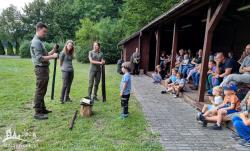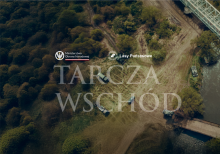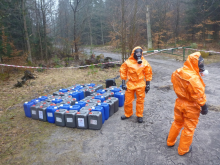 Asset Publisher
Asset Publisher
The State Forests National Forest Holding
The State Forests National Forest Holding is the largest organisation in the European Union managing forests, which belong to the State Treasury and celebrating its 90 anniversary this year.
Presently, we manage the area of one third of Poland's territory. Not long after the end of the Second World War, there was only 21 % of the area. Every year we plant 500 million of new trees, as we want Polish forests grow all the time.
Every year Polish foresters plant 500 million of trees.
85 % of nature reserves in Poland are located within the State Forests. 40 % of the forests managed by General Directorate of the State Forests are protected within the framework of European network Natura 2000. We fight against many threats: natural disasters, plaques of insects, trees' diseases, fires, pollutions, as well as poaching and vandalism.
We take care the forestry supplying the market with timber, as ecological and universal material, to be carried on in accordance with rules of balanced development (photography P.Fabjański).
One of our major tasks is making forests accessible to the society. We invite you to take advantage of these beautifully located within the forest wilderness holiday resorts, forester's lodges or guest rooms. That is for you, we create thousand kilometres of hiking trails, cycling paths or camping sites. All the above mentioned, you can find in service www.czaswlas.pl.
We also take care the forestry supplying the market with timber, as ecological and universal material, to be carried on in accordance with rules of balanced development. We obtain over 30 million of cubic meters of wood annually, twice as much as at the beginning of the nineties of the XX century.
Despite of this, the average of wood abundance per hectare of our forests is one fourth bigger than 20 years ago and 40% bigger than the average of European Union currently amounts.
In Poland in sectors connected with the forestry, there work about 375 thousand of people. It means that each 40 working Pole works in the forest.
In Poland in sectors connected with the forestry, there work about 375 thousand of people. It means that each 40 working Pole works in the forest. The sector of wood processing works out approximately 8 % of our GDP (Gross Domestic Product). Among others, thanks to the timber from the State Forests Poland is the 10 largest producer of furniture in the world, and the 4 largest furniture exporter.
The State Forests employ 25 thousand people. That way we are the 9 biggest employer in Poland. Among the largest companies in our country it takes 22 place in respect of its incomes and 11 place in respect of its profits. The value of assets, we manage, reaches 300 million zl. If we add social values, it will be worth one billion zlotych. We do not use money from the budget, but we earn money on our own to support the business. In spite of the financial crisis, since 2002, we continuously note down profits. Moreover, we pay taxes amounting 1,3 billion zl annually.
87 % of Poles think, the foresters are competent. We willingly share our knowledge of Polish forests, of their history and of nature values with the others. We publish books, periodicals, brochures; we also administer the website www.lasy.gov.pl . For children, the youth and teachers, we prepared internet service "E-lynx' Lynx Forest" (www.erys.pl). Our staff has supported schools in field of nature education for years. We also organise many actions to let people broaden their knowledge about forest, nature and ecology.
 Asset Publisher
Asset Publisher
Las do góry nogami, czyli warsztaty chiropterologiczne
Las do góry nogami, czyli warsztaty chiropterologiczne
Nie wplątują się we włosy i nie zagrażają ludziom. Są za to niezwykle pożyteczne, szybkie i długowieczne. Mowa oczywiście o nietoperzach na spotkanie z którymi zaprosili w miniony piątek (25 sierpnia) pracownicy Nadleśnictwa Szczecinek.
Ostatni weekend sierpnia, to tradycyjnie pora gdy obchodzimy Międzynarodową Noc Nietoperzy. To także doskonała okazja by poznać lepiej te niezwykłe ssaki, przyjrzeć się pracy chiropterologów i rozprawić z kilkoma nieprawdziwymi mitami na ich temat.
Na spotkanie edukacyjne w szkółce leśnej w Gałowie szczecineccy leśnicy zaprosili już po raz drugi. Ogromny sukces zeszłorocznej edycji wydarzenia, udowodnił, jak wielka jest ciekawość i zapotrzebowanie mieszkańców regionu na tego typu treści. Przewodnikiem i głównym specjalistą w zakresie budowy anatomicznej, zwyczajów i jadłospisu nietoperzy był Wojciech Olma – leśnik i członek Ogólnopolskiego Towarzystwa Ochrony Nietoperzy.
Skąd zła sława i niepokój wywoływany w ludziach przez te skądinąd łagodne stworzenia?
– Sądzę, że to dlatego że nietoperze spotykamy w bunkrach, piwnicach, jaskiniach i wszelkich innych ciemnych zakamarkach, których ludzie nie kojarzą raczej z bezpieczeństwem – wyjaśnił Wojciech Olma.
– Podobnie jest z mitem jakoby nietoperze wkręcały się we włosy. Te małe ssaki posługują się echolokacją i sprawnie omijają nawet drobne przeszkody. Jak miałyby zatem nie zauważyć ludzkiej głowy i utknąć we włosach? To również „straszna” bajka powtarzana w środowiskach wiejskich, by powstrzymać młode panny przed wieczornymi schadzkami z kawalerami.
Faktem jest za to, tysiąc czterysta gatunków nietoperzy, z których dwadzieścia osiem występuje w Polsce. Najpopularniejsze z nich to: karliki malutkie, mroczki późne czy borowce – spotykane głównie w środowisku leśnym. Chodź dieta tych zwierząt jest zróżnicowana i obejmuje nektar, pyłki, owoce a nawet ryby, nasze rodzime gatunki są wyłącznie owadożerne, a jeden osobnik może w ciągu doby pochłonąć nawet trzy tysiące komarów!
Prawdą jest również to, że nietoperze prowadzą głównie nocny tryb życia i odpoczywają zwisając głową do dołu. W naszym kraju wszystkie osobniki objęte są ścisłą ochroną gatunkową. Zagraża im głównie utrata siedlisk na skutek postępującej industrializacji, naturalnych wrogów mają bowiem niewielu.
Podczas warsztatów, uczestnicy mieli także okazję zobaczyć jak odławia się nietoperze w celach naukowo – badawczych. Służy do tego delikatna siatka, której nawet bardzo czuły zmysł detekcji nietoperzy, nie jest w stanie odróżnić od pajęczej sieci. Po zaledwie kilkunastu minutach oczekiwania, udało się pochwycić dwa osobniki. Nim bezpiecznie powróciły do lasu, pan Wojciech Olma zaprezentował je publiczności, wywołując wielkie poruszenie zwłaszcza wśród najmłodszych.
materiał: iszczecinek


 fot. Paweł Fabijański
fot. Paweł Fabijański
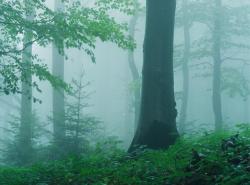 fot. Paweł Fabijański
fot. Paweł Fabijański
 fot. Paweł Fabijański
fot. Paweł Fabijański
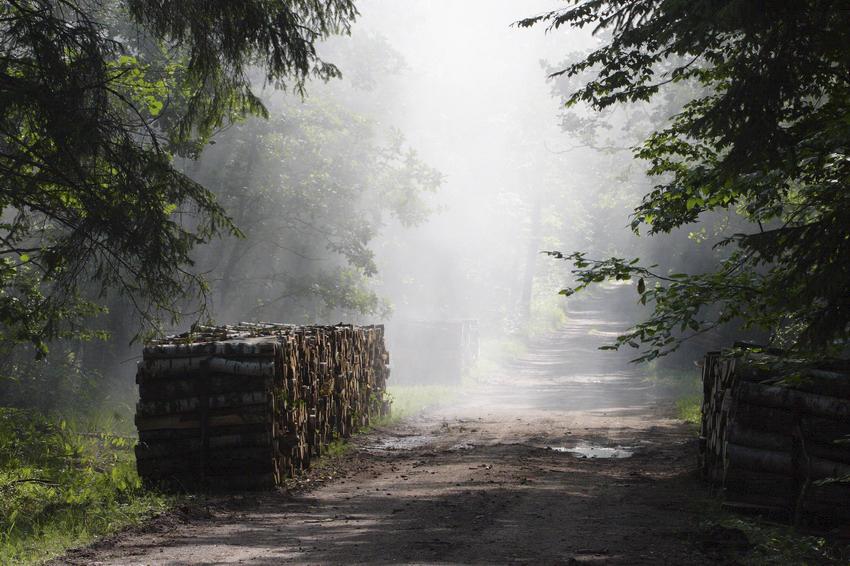
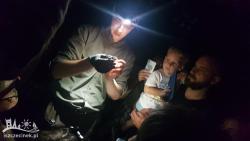 Uczestnicy wydarzenia w czasie nocnego spotkania
Uczestnicy wydarzenia w czasie nocnego spotkania
